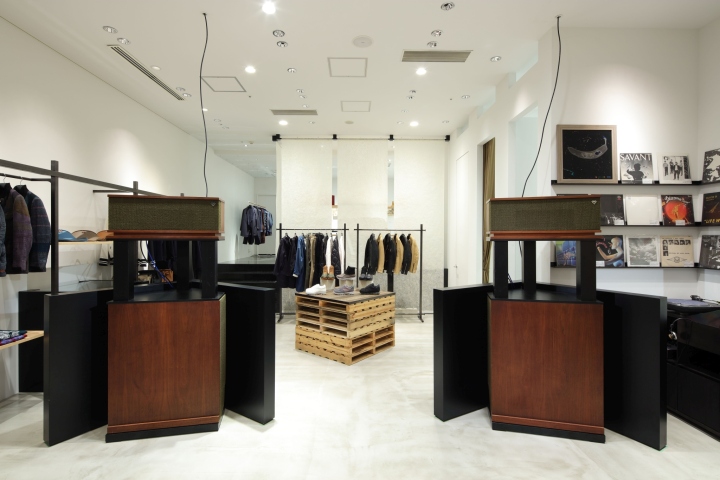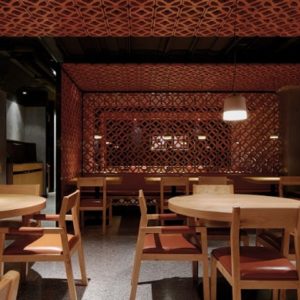


The shop is located on an alley one street behind the main street. Its concept is “indigenous and imported,” and it was created to be a new culture transmission hub. Every season, themes are set not only in fashion, but in the art, music, book and food genres, and the shop displays items bursting with originality that have been carefully selected from around the world. The shop’s subtle, elegant tile façade serves as its sign, setting it apart from the surrounding crowds. Once you pass through a tunnel that has been fitted with a window of enlightenment which seems as if it may release you from all worldly desires, the space reveals itself.

When you enter the shop, the first sights that present themselves are plaster-covered walls, gourds, Japanese paper, stone and tatami: Materials that have been used in Japan since antiquity. Although these materials are traditional, combining them with modern materials and expressions in a minimalist space results in a bracing, vivid breath of fresh air. Container pallets have been placed randomly around the floor for use as displays. Vintage speakers, manufactured by the Klipsch Company for only twenty years beginning in the 1940s, replay pleasant audio carefully selected from around the world. Each of these separate components awakens senses you don’t generally use, stimulating your curiosity towards new discoveries.

In the gallery space at the very back of the floor, we display themed exhibitions that constantly stir the era. The floor’s resin treatment gives it such a high shine you’ll mistake it for water. It lends an awareness of “nothing” to the spirits of those who step onto it, with the result that the worldview of the exhibit stands out even more prominently. Descend the stairs to the basement, and you’ll find yourself in a selection zone with a floor plan conducive to wandering. Fashion, art and books hand-picked from around the world provoke even more curiosity, uplift feelings, and stimulate a spirit of inquiry in visiting guests.
Designed by ITO MASARU DESIGN PROJECT / SEI
Photography by Kozo Takayama


































